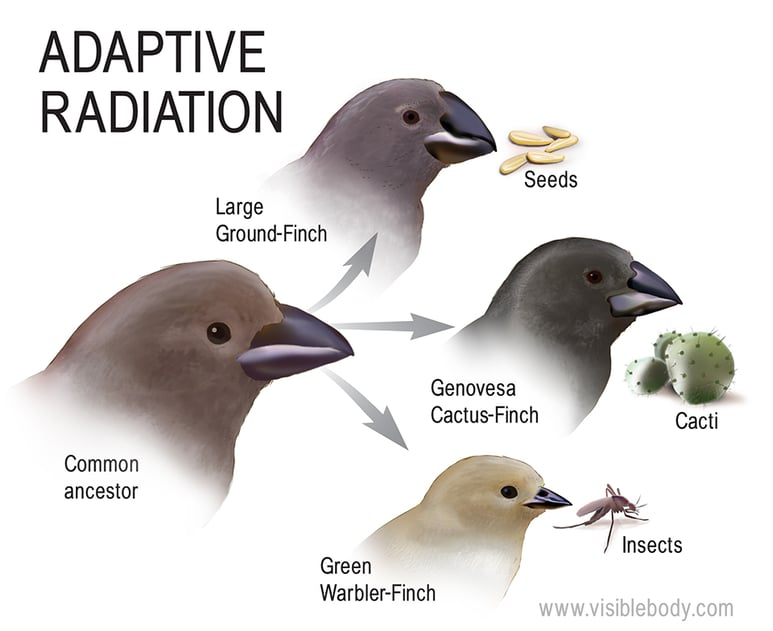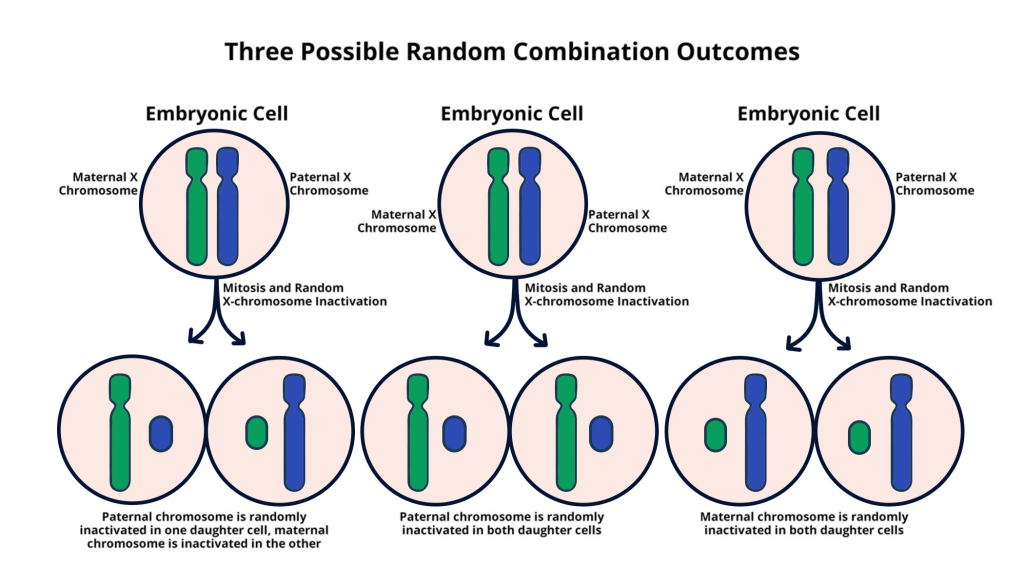
Genetic adaptation in house finches has emerged as a fascinating area of study, revealing insights into how these small birds respond to environmental challenges. Recent research led by Bohao Fang has conducted a pioneering pangenomic study that highlights significant DNA variations aiding disease resistance in birds, particularly focusing on how house finches have developed evolutionary adaptations over time. By examining a broader spectrum of house finch genetics, Fang’s work has unveiled a remarkable DNA inversion that could be key to the species’ resilience against pathogens like conjunctivitis. This groundbreaking research not only enhances our understanding of genetic variation but also paves the way for further studies on disease resistance in birds. As researchers continue to explore the complexities of avian genetics, the house finch stands out as a critical model for understanding the dynamic relationship between genetic adaptation and environmental pressures.
Understanding genetic evolution in common avian species like the house finch offers remarkable insights into the mechanisms shaping their survival and health. This topic is further enriched by Bohao Fang’s innovative research, which utilizes advanced pangenomic techniques to analyze how structural variations in bird DNA can influence disease resistance. By examining the long-term adaptations of the house finch, we can gain a clearer perspective on their evolutionary strategies against pathogens. The implications of these findings extend beyond just avian biology, potentially illuminating broader principles applicable to other species, including humans. Through this lens of evolutionary biology, the house finch serves as a valuable case study in the field of genetics, revealing the interconnected nature of life and the survival challenges faced by species in a rapidly changing world.
Understanding Genetic Adaptation in House Finches
Genetic adaptation in house finches offers a fascinating glimpse into the processes of evolution and natural selection. This small bird species has been able to adapt genetically to various environmental pressures, particularly diseases, due to its unique genomic traits. Recent studies indicate that house finches have experienced significant genetic changes over time, particularly regarding disease resistance. By analyzing their genetic makeup, researchers can uncover the underlying mechanisms that have enabled these birds to thrive in the face of adversity.
The research led by Bohao Fang employs a cutting-edge pangenomic approach, allowing scientists to examine not just individual genes but larger structural variations in their DNA. This method leads to a more comprehensive understanding of genetic adaptations, showcasing how evolutionary changes can manifest in a species. For instance, the identification of a major DNA inversion in house finches highlights how their genetics have evolved over millions of years, specifically enhancing their resilience against diseases such as conjunctivitis.
The Role of Pangenomic Studies in Evolutionary Research
Pangenomic studies play a crucial role in modern genetics, particularly in understanding evolutionary adaptations in various species, including house finches. These studies explore the entire genome of an organism, rather than focusing on specific genes, which can provide deeper insights into the genetic diversity and the evolutionary pressures faced by a population. By utilizing advanced techniques such as long-read sequencing, researchers can identify significant structural variations that traditional methods might overlook.
This approach not only enriches our understanding of house finch genetics but also has broader implications for studying other organisms. Insights gained from pangenomic research can inform conservation strategies and enhance our comprehension of how various species might adapt to changing environments and emerging infectious diseases. The findings from Bohao Fang’s work exemplify how pangenomic insights shed light on the complex interplay between host organisms and pathogens over time.
Disease Resistance in Birds: Lessons from House Finches
The study of disease resistance in birds is vital, and house finches provide a perfect model for examining this phenomenon. Their immunity to certain diseases has dramatically evolved, especially since the onset of outbreaks like conjunctivitis, which has significantly impacted their populations. Researchers have documented this evolution, revealing how certain genetic adaptations have enhanced their ability to resist infections.
Through Bohao Fang’s research, we gain valuable insights into how house finches respond to these threats at a genetic level. By analyzing historical DNA samples, researchers can trace back the changes in genetic makeup that correlate with disease prevalence. Such work not only illuminates the specific adaptations of house finches but also offers clues about how other bird species—and even humans—may develop resistance to infectious diseases over time.
Implications of Bohao Fang’s Research on House Finch Genetics
Bohao Fang’s groundbreaking research on house finch genetics has significant implications for evolutionary biology. His findings reveal a structural variant in the finch’s DNA that contributes to its disease resistance, underscoring the importance of understanding genetic adaptations in wild populations. The ability to analyze genetic material over long periods offers researchers a unique perspective on how species evolve in response to environmental pressures, such as emerging pathogens.
Furthermore, Fang’s work highlights the potential for broader applications in other areas of genomic research. By establishing how one species adapts genetically, scientists can apply these findings to conservation efforts and disease management strategies for other wildlife, emphasizing the interconnectedness of ecosystems and the adaptive responses of species. This pangenomic approach is paving the way for future studies in population genomics, signaling a shift toward a more comprehensive understanding of genetic variation.
Bird Genomics: A New Frontier in Evolutionary Studies
The field of bird genomics has rapidly evolved, revealing intricate details about the genetic diversity and adaptive strategies within avian species. House finches serve as a pivotal example of how genomic studies can illustrate adaptation and survival in changing environments. The advanced genomic techniques applied in recent studies, particularly Fang’s use of pangenomic analysis, have opened new avenues for understanding the evolutionary dynamics among bird populations.
As birds face increasing threats from habitat loss and disease, genomic research becomes even more essential. By employing innovative sequencing methods, scientists are discovering how various avian species, including house finches, manage to thrive despite these challenges. The implications are vast, extending beyond individual species to encompass the ecological and evolutionary frameworks that govern wildlife adaptation across different environments.
Ecological Significance of House Finch Genetic Variation
The ecological significance of genetic variation in house finches cannot be overstated; it plays a fundamental role in the species’ ability to adapt to their environments. By tracking genetic changes over time, researchers gather insights into how these birds respond to shifting ecological conditions, including food availability and disease prevalence. The identification of specific genetic adaptations linked to environmental factors highlights the importance of biodiversity in maintaining healthy ecosystems.
Moreover, understanding the genetic variation present in house finches can inform conservation efforts, enabling wildlife managers to prioritize interventions that enhance the resilience of this species and others facing similar pressures. The findings from Bohao Fang’s study are pivotal in recognizing how genetic diversity fosters overall population health and stability, thereby ensuring the survival of avian species amid environmental changes.
Historical Perspectives on House Finch Genetic Adaptations
Historical perspectives on house finch genetic adaptations provide essential context for understanding current evolutionary trends. The long-standing relationship between these birds and pathogens, such as the conjunctivitis bacteria, has shaped their genetics significantly over time. Researchers can analyze genetic samples archived since the early 2000s to trace the genetic evolution that has occurred in response to disease outbreaks.
By comparing historical data with contemporary genomes, scientists gain insights into how house finches have developed resilience over the years. This retrospective approach not only enhances our understanding of the species’ evolutionary context but also serves as a guide for predicting future adaptations that may arise due to ongoing environmental and health challenges facing these birds.
Comparative Analysis: House Finches and Other Avian Species
A comparative analysis of house finches and other avian species reveals fascinating insights into genetic adaptation and disease resistance. While house finches have demonstrated notable resilience against specific pathogens, other species exhibit different evolutionary strategies in dealing with similar threats. By investigating the genetic differences among various bird populations, researchers can understand the diverse methods of adaptation employed by birds in response to environmental pressures.
Such comparative studies are crucial for identifying the genetic factors that facilitate disease resistance across species. The approaches pioneered in house finch research can be applied to other birds, potentially uncovering broader patterns in avian evolutionary biology. Ultimately, these insights help in formulating better conservation practices that protect not just house finches, but also the diverse array of avian species sharing similar habitats.
Future Directions in Avian Genetics Research
As the study of avian genetics continues to evolve, future directions will increasingly focus on understanding the nuances of genetic adaptation, as exemplified by house finches. With advances in sequencing technologies and pangenomic methodologies, researchers are better equipped than ever to explore the vast complexities of bird genomes. The success of Bohao Fang’s research serves as a catalyst for new studies that will delve deeper into the genetic underpinnings of resilience and adaptability in avian populations.
Looking ahead, researchers will likely emphasize the integration of genomic data with ecological and behavioral studies to gain a holistic view of how birds adapt to their environments. The consideration of multiple factors—environment, genetics, and social structures—will be pivotal in shaping future avian genetics research. Ultimately, this interdisciplinary approach promises to unveil new insights into the evolutionary adaptations that ensure the survival of birds like house finches in an ever-changing world.
Frequently Asked Questions
What is the significance of genetic adaptation in house finches?
Genetic adaptation in house finches plays a crucial role in their survival, especially in response to disease pressures. A groundbreaking pangenomic study revealed significant DNA variations that enable these birds to develop resistance to pathogens like the conjunctivitis-causing bacteria. This adaptability showcases evolutionary responses to environmental challenges, providing insights into broader ecological dynamics.
How does Bohao Fang’s research contribute to our understanding of house finch genetics?
Bohao Fang’s research on house finch genetics utilizes a pangenomic approach, which analyzes extensive genetic data from multiple specimens. This method revealed a major DNA inversion potentially linked to disease resistance, helping researchers understand how evolutionary adaptations occur over time within this species, especially concerning their health in the wild.
What are the evolutionary adaptations observed in house finches as a response to disease?
The evolutionary adaptations in house finches, particularly regarding disease resistance, include significant structural changes in their DNA. The recent pangenomic study found that these adaptations may have enabled house finches to withstand infections like conjunctivitis, illustrating the impact of natural selection on their genetics over millions of years.
What does the term ‘pangenomic study’ entail in the context of house finches?
A pangenomic study refers to research that examines the complete set of genetic material across many individuals of a species, such as house finches. This approach, highlighted in Bohao Fang’s study, allows scientists to detect large-scale genetic variations and their associations with traits like disease resistance, providing a more comprehensive understanding of house finch genetics.
How do disease resistance and genetic adaptation relate in house finches?
Disease resistance and genetic adaptation in house finches are closely interlinked. Genetic adaptations identified through pangenomic studies reveal structural DNA changes that enhance the birds’ ability to combat diseases. Understanding these adaptations provides valuable insights into the evolutionary mechanisms that govern health and survival in wild populations.
Why are house finches considered model organisms for studying genetic adaptation?
House finches are considered model organisms for studying genetic adaptation due to their observable responses to environmental changes, particularly disease pressures. With documented genetic variations and historical data available, they serve as an excellent reference for exploring evolutionary adaptations and understanding how species respond to new challenges, including infections.
What can we learn from house finches about the development of disease resistance?
Studying house finches offers a real-life example of how species develop disease resistance through genetic adaptation. Bohao Fang’s research highlights how large DNA changes can inform us about evolutionary processes, guiding our understanding of disease responses not only in birds but potentially in other animals, including humans.
| Key Point | Details |
|---|---|
| Groundbreaking Study | Research reveals a major DNA flip in house finches that enhances disease resistance. |
| Pangenomic Approach | Utilizes advanced sequencing to analyze broad genetic variation across multiple specimens, offering a clearer picture of adaptation. |
| Importance of Historical Samples | Utilizes house finch DNA samples collected over decades to study evolutionary responses to diseases. |
| Real-Life Example | Study shows how house finches have evolved responses to a specific pathogen, providing insights into immunity development. |
| Future of Genomic Studies | Pangenome approaches are beneficial for studying genetic variation in wildlife, paving the way for new discoveries. |
Summary
Genetic adaptation in house finches has been highlighted by recent groundbreaking research that demonstrates how these birds have evolved mechanisms to resist diseases. The innovative pangenomic study conducted by Bohao Fang not only uncovers significant genetic variations but also emphasizes the species’ ability to adapt in the wild. By analyzing extensive genetic data over time, the research provides valuable insights into the evolutionary response of house finches to emerging infectious threats. Ultimately, this study enriches our understanding of genetic adaptation not only in birds but potentially in other species facing similar challenges.


